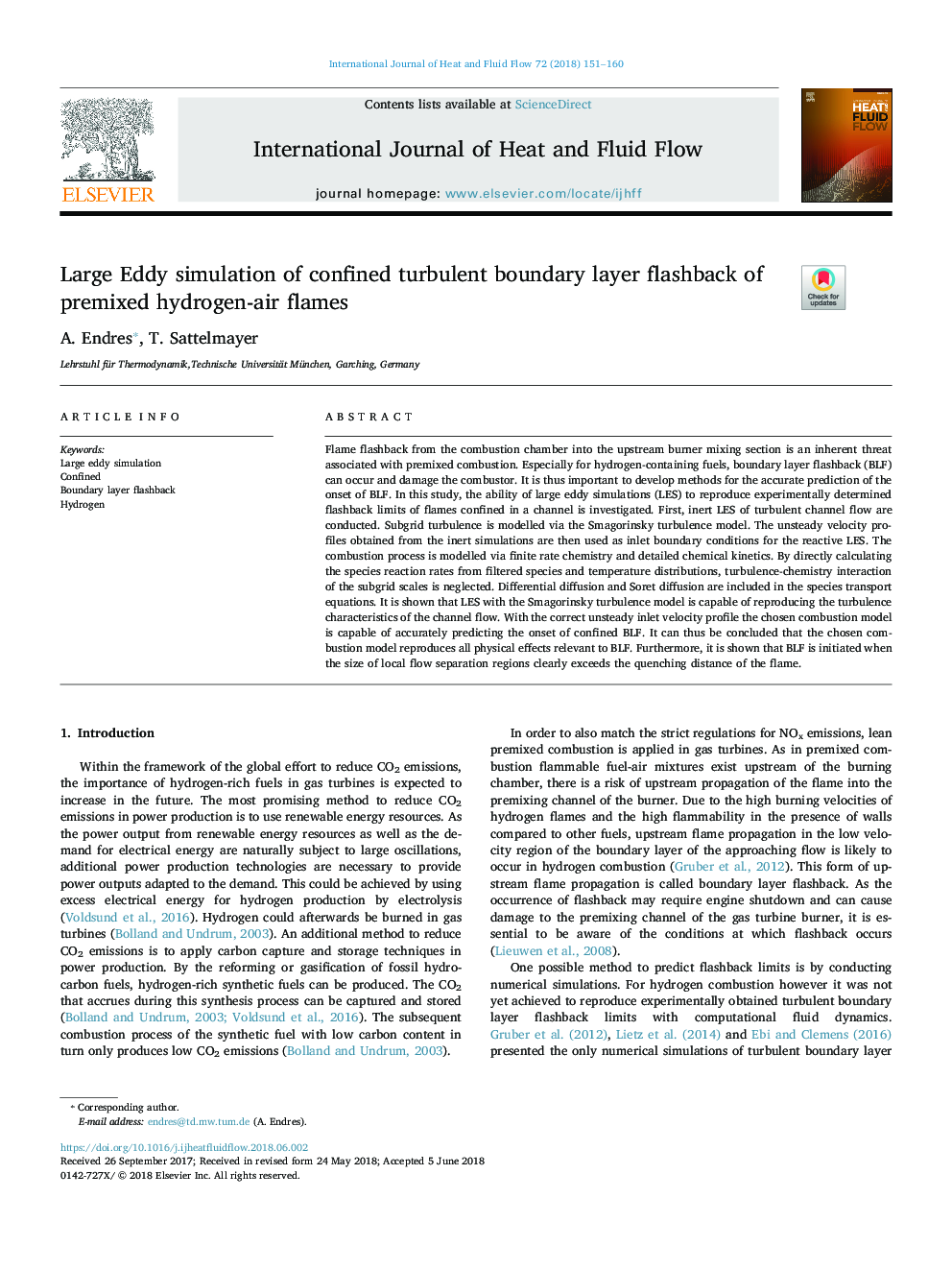| Article ID | Journal | Published Year | Pages | File Type |
|---|---|---|---|---|
| 7053438 | International Journal of Heat and Fluid Flow | 2018 | 10 Pages |
Abstract
Flame flashback from the combustion chamber into the upstream burner mixing section is an inherent threat associated with premixed combustion. Especially for hydrogen-containing fuels, boundary layer flashback (BLF) can occur and damage the combustor. It is thus important to develop methods for the accurate prediction of the onset of BLF. In this study, the ability of large eddy simulations (LES) to reproduce experimentally determined flashback limits of flames confined in a channel is investigated. First, inert LES of turbulent channel flow are conducted. Subgrid turbulence is modelled via the Smagorinsky turbulence model. The unsteady velocity profiles obtained from the inert simulations are then used as inlet boundary conditions for the reactive LES. The combustion process is modelled via finite rate chemistry and detailed chemical kinetics. By directly calculating the species reaction rates from filtered species and temperature distributions, turbulence-chemistry interaction of the subgrid scales is neglected. Differential diffusion and Soret diffusion are included in the species transport equations. It is shown that LES with the Smagorinsky turbulence model is capable of reproducing the turbulence characteristics of the channel flow. With the correct unsteady inlet velocity profile the chosen combustion model is capable of accurately predicting the onset of confined BLF. It can thus be concluded that the chosen combustion model reproduces all physical effects relevant to BLF. Furthermore, it is shown that BLF is initiated when the size of local flow separation regions clearly exceeds the quenching distance of the flame.
Related Topics
Physical Sciences and Engineering
Chemical Engineering
Fluid Flow and Transfer Processes
Authors
A. Endres, T. Sattelmayer,
